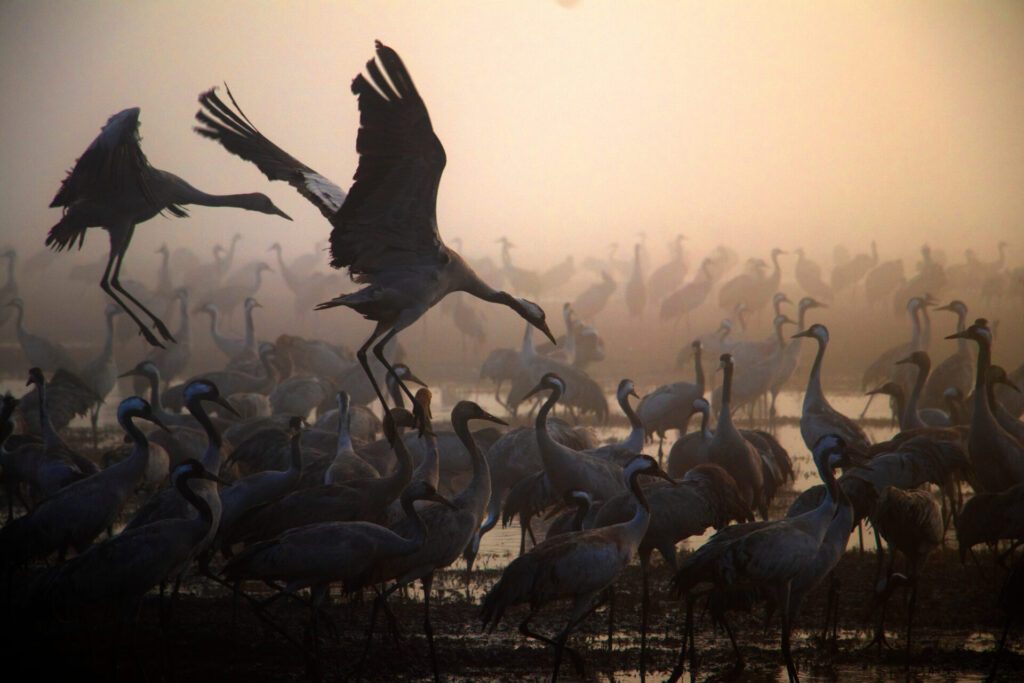

Avian Influenza
With devastating consequences for the poultry industry, farmer’s livelihoods, international trade, and the health of wild birds, avian influenza, also known as ‘bird flu’, has captured the attention of the international community over the years.
Where outbreaks occur in domestic birds, it is often the policy to cull all poultry, whether infected or healthy, to contain the spread of avian influenza. This represents heavy economic losses for farmers and a long-lasting impact on their livelihoods.
Migratory wild birds especially waterfowl, are natural reservoir of avian influenza viruses and they play a role in the spread the viruses across large geographical areas and also becomes victims of the disease.
Avian influenza is also a major concern for public health. Whenever avian influenza viruses circulate in poultry, sporadic cases of avian influenza in humans are sometimes identified.
What is avian influenza?
Avian influenza is a highly contagious viral disease that affects both domestic and wild birds. Avian influenza viruses have also been isolated, although less frequently, from mammalian species, including humans. This complex disease is caused by viruses divided into multiple subtypes (i.e. H5N1, H5N3, H5N8 etc.) whose genetic characteristics rapidly evolve. The disease occurs worldwide but different subtypes are more prevalent in certain regions than others.
The many strains of avian influenza viruses can generally be classified into two categories according to the severity of the disease in poultry:
- low pathogenicity avian influenza (LPAI) that typically causes little or no clinical signs;
- high pathogenicity avian influenza (HPAI) that can cause severe clinical signs and possible high mortality rates.
What is bird flu?
In the video below, disease expert, David Swayne breaks down the differences between low and high pathogenicity bird flu, as well as the impacts on farmers and consumers.
https://youtube.com/watch?v=ljemEqN9EZI%3Ffeature%3Doembed%26enablejsapi%3D1%26origin%3Dhttps%3A
Transmission and spread
Several factors can contribute to the spread of avian influenza viruses, such as:
Movement of infected birds
Farming and sale (live bird markets)
Wild birds and migratory routes.
In birds, avian influenza viruses are shed in the faeces and respiratory secretions. They can all be spread through direct contact with secretions from infected birds, especially through faeces or through contaminated feed and water. Because of the resistant nature of avian influenza viruses, including their ability to survive for long periods when temperatures are low, they can also be carried on farm equipment and spread easily from farm to farm.

In recent years, the changes in the ecology and epidemiology of specific avian influenza lineages led to infection of numerous wild bird species. Consequently, this facilitated the spread of the virus along established migratory routes, resulting in death of many wild birds, including endangered species, and serving as a source for transmission to poultry and wild mammals.
What role do wild birds play in the spread of avian influenza?
Wild birds mostly, wild aquatic birds can be the reservoir for LPAI viruses, and such infections are not associated with disease or mortality in their hosts. Over long periods of time, some of these LPAI viruses have moved into domestic birds (notably galliform poultry) through direct or indirect exposure followed by adaptation and circulation. Some of those viruses have mutated to become HPAI causing severe losses.
Historically, HPAI viruses have not been transferred back into wild aquatic birds, and wild aquatic birds have not had significant involvement in the spread of HPAI to poultry or other domestic birds. In recent years, the epidemiology of HPAI virus has changed, being endemic in domestic birds in a number of countries causing major outbreaks among domestic but also wild birds worldwide.
The global impact of avian influenza
Economic consequences
Avian influenza can kill entire flocks of birds so this causes devastating losses for the farming sectorDr. Keith Hamilton
Head of the WOAH Preparedness and Resilience Department
Avian influenza outbreaks can have heavy consequences for the poultry industry, the health of wild birds, farmer’s livelihoods as well as international trade.
Farmers
might experience a high level of mortality in their flocks, with rates often around 50%
Job losses
in developing countries can be significant due to the labour intensive nature of the poultry industry
Healthy birds
are often culled to contain outbreaks, resulting in risks to animal and human welfare, protein wastage and economic impacts
The presence of HPAI
restricts international trade in live birds and poultry meat This can heavily impact national economies
Impact on animal health, including wild birds
With severe mortality rates, avian influenza can heavily impact the health of both poultry and wild birds. Often considered mainly as vectors of the disease, wild birds, including endangered species, are also victims. The consequences of avian influenza on wildlife could potentially lead to a devastating effect on the biodiversity of our ecosystems.
In addition, avian influenza can also cross the species barrier and infect domestic and wild terrestrial and marine mammals .
https://youtube.com/watch?v=ErQ8GpRzoAk%3Ffeature%3Doembed%26enablejsapi%3D1%26origin%3Dhttps%3A
Public health risk
The transmission of avian influenza from birds to humans is usually sporadic and happens in a specific context. People who are in close and repeated contact with infected birds or heavily contaminated environments are at risk for acquiring avian influenza.
However, due to ongoing circulation of various subtypes , outbreaks of avian influenza continue to be a global public health concern.
Keywords: Bird Flu, Outbreak, Global Health, Pandemic Preparedness, Avian Influenza
#BirdFlu #GlobalHealth #PandemicPreparedness
